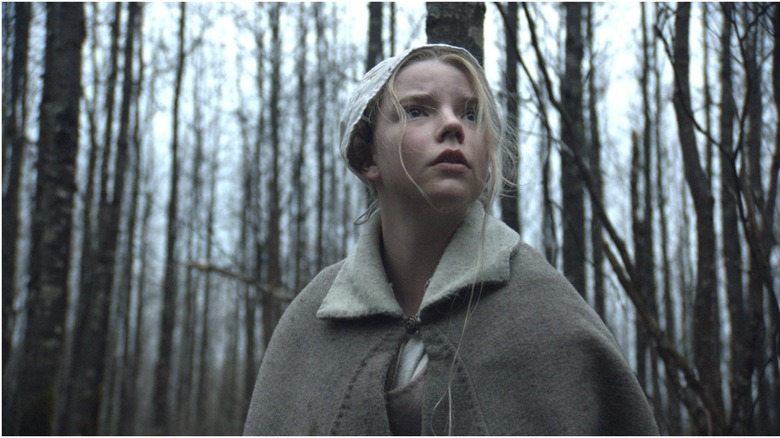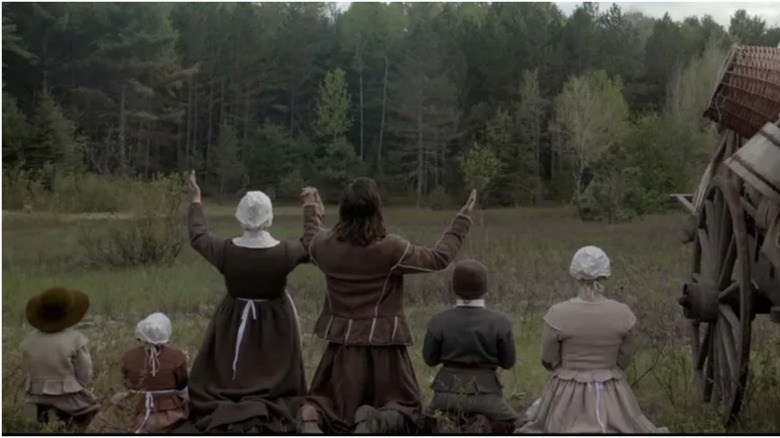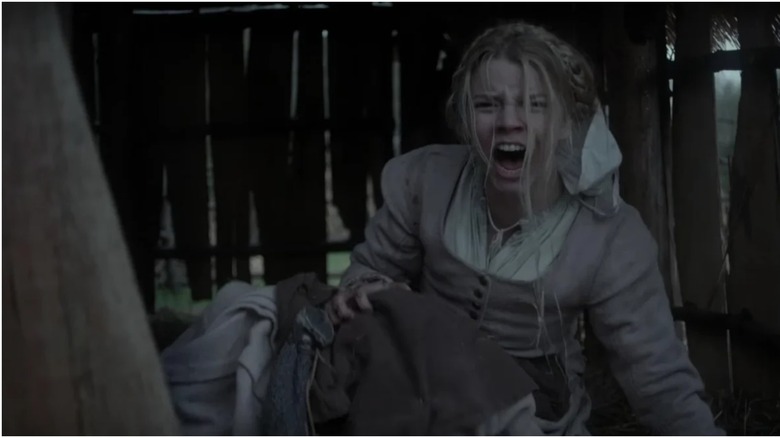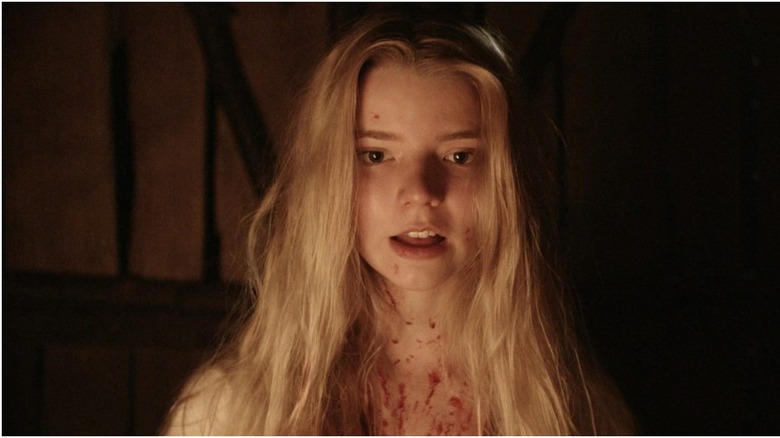The Witch's Dread Comes From Its Puritanical Origins
Robert Eggers' "The Witch" is the scariest horror film of the 21st century; it's to the 2010s what "The Shining" was for the 1980s. "The Witch" uses many of the same terrors as Kubrick's film, such as paranoia born from isolation to the dissolution of the family unit. Both films have a malignant supernatural force acting in the background that only becomes undeniable as the story progresses. What sets "The Witch" apart is that it's a period piece. It couldn't be set in any place other than 17th century New England, because what makes the movie so scary is rooted in the values and fears held by the Puritans of the time.
Who were the Puritans?
In history classes across the United States, students are usually taught that the Pilgrims settled in New England to escape the religious persecution they faced back home in Britain. Like most history taught in American schools, this is sanitization to the point of inaccuracy.
The Puritans had been in conflict with the Church of England, viewing the centralized structure with a king atop as just Catholicism with a new coat of paint. When King Charles I dissolved Parliament in 1629, silencing voices of Puritan dissent, that was the last straw. The Puritans settled in New England so they could build a society on their value system; they had no interest in freedom of worship as a principle. Indeed, in "The Witch," the family is exiled from the settlement over a dispute between William (Ralph Ineson) and the ruling council on how to properly worship. Upon his family's exile, William utters:
"What went we out into this wilderness to find? Leaving our country, kindred, our father's houses? We have travailed a vast ocean ... for what? Was it not for the pure and faithful dispensation of the Gospels and the Kingdom of God? I cannot be judged by false contented Christians under an unseparated church! An English king's church."
So, what were these beliefs that the Puritans clung to so ardently? The Puritans were followers of John Calvin: They advocated for textual reading of scripture, total sovereignty of God (no popes, no kings), no ritualistic worship, and crucially, predestination. Living so strictly, so un-deliciously, can only cause repression of basic impulses, and negative consequences will spill over from that, as shown in real life by the Salem witch trials.
Puritan fears
The Salem witch trials have been depicted in countless media, from drama like in Arthur Miller's "The Crucible" to Saturday morning cartoon fun like in "Scooby-Doo! and the Witch's Ghost." The Puritan way of living was doomed for a disaster of this sort; followers were taught that the slightest sin meant damnation and that witches lived among them, hoping to lead them astray into hellfire. Paranoia was inevitable, as was carceral "justice" when the church was so entangled with the state. As a result of Salem's community members turning on each other, 19 were hanged.
"The Witch" replicates this paranoia in the microcosm of family instead of community. The subdued presence of the supernatural, and initial ambiguity if it even exists, puts the viewer in the same mindset as Puritans beware of witches in their midst. They're fairly sure it's there, but with the witch out of sight, they can't be certain. Robert Eggers even slyly nods to academic theories that the trials resulted from a crop blight. As the director explained to Slate:
"The rot on the [family's] corn is ergot, which is a hallucinogenic fungus, so if you wanted to take that route, you could. It's not necessarily my route, but there are multiple ways in."
At the same time, though, "The Witch" emphasizes how different a culture the Puritans were from modern day culture; the family speaks English so archaic it's practically a different language. Eggers and his team shot with decades-old cameras so the film's look would complete this feeling of antiquity. This is quite different from "The Crucible." First penned in 1953, the play allegorizes the Salem trials to contemporary McCarthyism; the audience understands the past through the lens of the present. "The Witch" makes the past seem alien and inflicts its point of view on the audience for maximum terror.
Puritan life through the eyes of a teenage girl
It should go without saying Puritan fundamentalism was misogynistic. In the book "Damned Women: Sinners and Witches in Puritan New England," author Elizabeth Reis writes: "Because women's bodies lacked the strength and vitality of men's, according to popular thought, the devil could more frequently and successfully gain access to and possess women's souls." Speaking to Time magazine, witch historian Katherine Howe added that this meant women were in need of minders, "specifically in the form of the church or a father or husband."
The lead of "The Witch" is Thomasin (Anya Taylor-Joy). Unlike similarly teenaged Abigail Williams of "The Crucible," Thomasin is not a harpy, but simply in the midst of puberty. She's first experiencing carnal desire, and when you've been taught such feelings are sinful, worthy of eternal damnation, they're terrifying. Unlike her family, the film treats Thomasin with sympathy. The external and internal torment she experiences is so great that joining the coven to escape seems the reasonable course of action. Taylor-Joy herself said of the ending:
"Thomasin's got no options. What she's gonna do, go back to living back in her isolated home live with her dead family? That would be pretty bleak ... I really see it as a liberation and a happy ending because Thomasin doesn't fit in with her society, her family, her anything, and all of a sudden she's like 'You know, f*** it, let's go be a witch.'"
When standards are so stringent, as they were in Puritan New England, even the most devout can only fall short. That's the moral of Thomasin's journey: If you criminalize natural feelings, then people will have no reason not to become the monster you deem them as.



